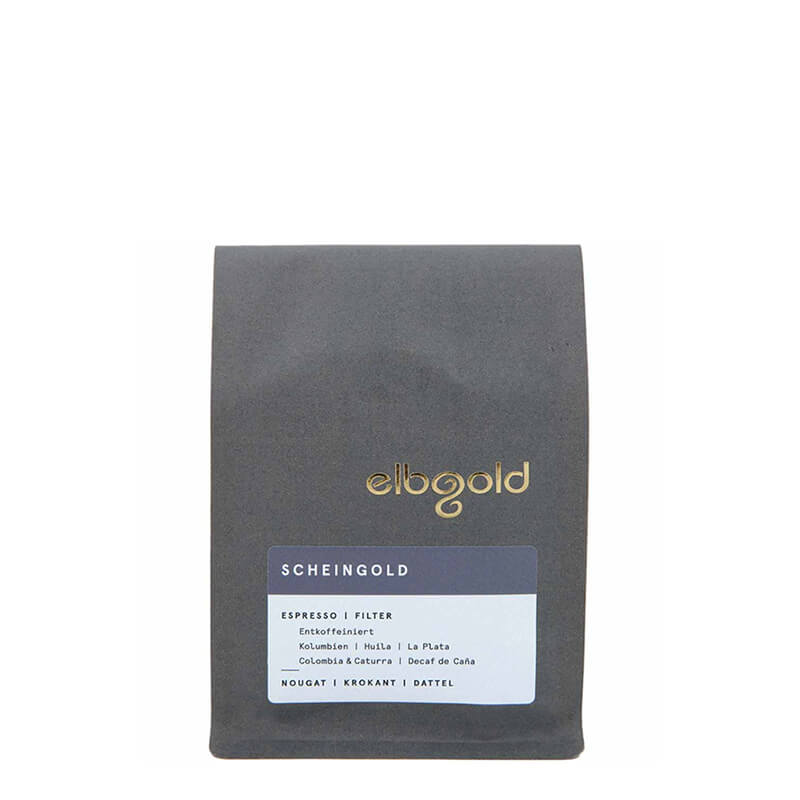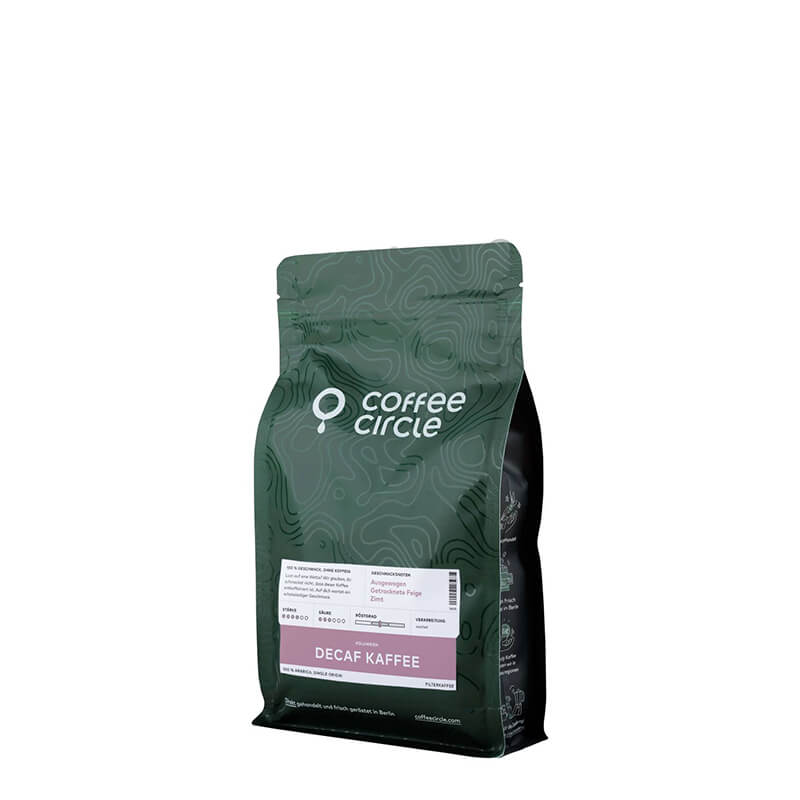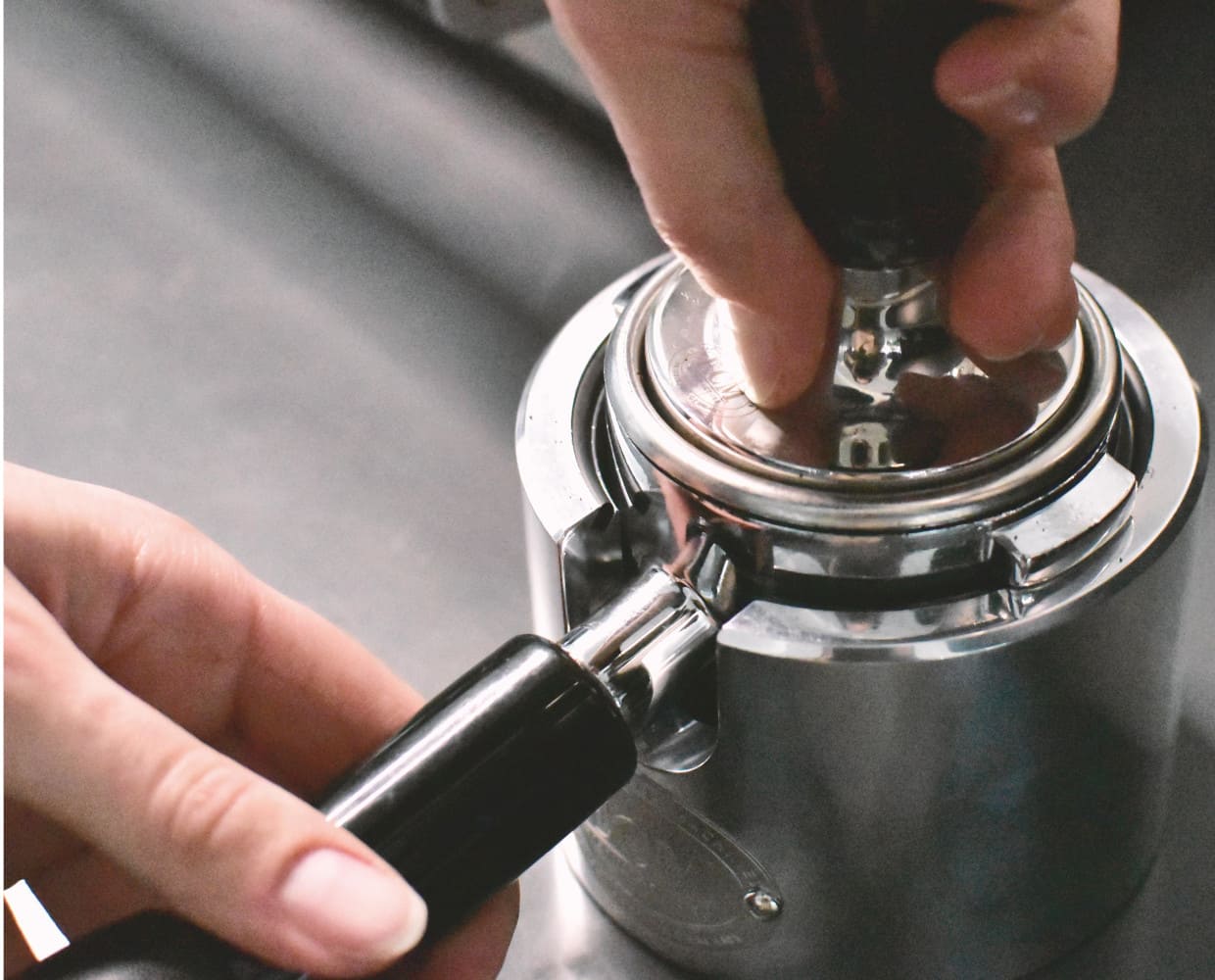

DECAFFEINATED COFFEE
DECAFFEINATED COFFEE - PURE ENJOYMENT
Coffee has more than a thousand ingredients with a wide variety of chemical structures, each with its own unique flavor and function. Caffeine is considered the most important ingredient in coffee because its effectiveness has been so well researched. Many people love not only the taste but also the effect of a cup of coffee, which can contain up to 120 mg of caffeine - depending on the method of preparation and the roast blend. If you understand your body's natural rhythm and don't want to miss out on the taste of coffee, you can choose decaffeinated coffee. This offers pure enjoyment without side effects.


WHAT ARE THE BENEFITS OF DECAFFEINATED COFFEE?
The fact that caffeine can have an effect on the body was already suspected by proven frahling lovers such as Goethe. The latter allegedly suffered from insomnia, and it was suspected that intensive coffee consumption could be to blame for the German poet's sleeplessness. In 1820, Friedlieb Ferdinand Runge, inspired by this anecdote about the poet prince, isolated caffeine from the coffee bean for the first time. This was the birth of decaffeinated coffee. Today, coffee drinkers love the decaffeinated version as an alternative at any time of day. People who eat a caffeine-conscious diet can reduce their daily caffeine intake by drinking decaffeinated coffee - but they don't have to give up the taste sensation that coffee offers. People who are sensitive to caffeine do not turn to the decaf variety without reason. Too much caffeine can cause tremors, sweating, palpitations or an irritated stomach, so decaf is particularly suitable for people who like to drink coffee a lot and often.People in special circumstances, such as women who are pregnant or people whose doctor recommends a general reduction in caffeine, often turn to decaffeinated coffee. Giving up the ritual of drinking coffee and the distinctive taste experience weighs more heavily than giving up the caffeine.
HOW IS DECAFFEINATED COFFEE MADE?
Coffee comes from the coffee plant and is a natural product that, when prepared well, offers fireworks for the taste buds. Distinctive and clear for those who love coffee. The small, green bean is extremely popular internationally. However, its caffeine content differs depending on the variety (Arabica or Robusta) or growing conditions. To remove the substance from the little green powerhouses that prevents us from calming down and switching off better, a three-stage decaffeination process is necessary: Steaming and moistening - Decaffeinating - Drying. The unmistakable taste profile of the coffee is preserved by modern processes. This method was developed in 1905 by the Bremen merchant Ludwig Roselius. He was the founder of the trading company Kaffee HAG in Bremen. To this day, many people use the Kaffee HAG brand as a synonym for decaffeinated coffee. Steaming and moistening remove the coffee skins and soften the surface structure of the green coffee with hot water to extract the caffeine in the next step. This step can take up to three hours. The caffeine is then released from the bean using an extraction or processing aid. This is done in a multi-step process. This ensures that the caffeine is dissolved as completely as possible from the bean and that the aroma-active substances remain in the bean. The processing aid is repeatedly added and removed in a recirculation process until the caffeine has been almost completely dissolved out of the bean. At the end, a further treatment with steam takes place to remove all residues of the extraction agent from the bean. The drying stage involves reducing the moisture content of the green coffee back to the original level before decaffeination, so that it can be further processed in the usual roasting processes to achieve the perfect coffee taste. Incidentally, the extracted caffeine by no means ends up in the waste, but is instead processed to a high degree of purity and reused in soft and energy drinks.HOW IS CAFFEINE EXTRACTED FROM THE BEAN?
Various processing aids are currently approved as extraction agents. Decaffeination with dichloromethane is the most common process, closely followed by the use of ethyl acetate. Both substances highly selectively dissolve the caffeine from the beans, thus leaving the other important and aroma-giving substances largely untouched in the green coffee. Carbon dioxide dissolves the caffeine at high pressure and higher temperature and, depending on the process variant, also works very selectively.


IS DECAFFEINATED COFFEE REALLY DECAFFEINATED?
No. Even if the various processing aids approved for decaffeination remove a high proportion of the caffeine, a residual content always remains due to the production process. By law, decaffeinated green coffee may contain up to 0.1 percent caffeine in the finished product. Normal roasted coffee contains around 1.5 percent caffeine. However, the small residual amount of up to 0.1 percent caffeine after the decaffeination process is so low that even if you drink several cups of decaffeinated coffee, you usually don't have to worry about the little bit of residual caffeine. Consequently, with decaffeinated coffee, even if you consume a lot of coffee, you will remain well below the guideline level for caffeine that is considered safe. This is why the designation "decaffeinated" is not permitted for decaffeinated coffee. In purely mathematical terms, therefore, you would have to drink more than 15 cups of decaffeinated coffee to reach the caffeine content of a normal cup.How much caffeine is in the individual coffee specialties? Here is an overview:
Filter coffee: 60 to 120 mg per 125 ml.Espresso: 50 to 60 mg in 50 ml
Soluble coffee: 50 to 80 mg per 125 ml
A cup of decaffeinated coffee (125 ml) contains around 1 to 6 mg of caffeine, leaving many coffee alternatives behind. Depending on the variety, caffeinated black tea can contain around 20 to 50 mg, and even a cup of cocoa has around 8 mg of caffeine. So it's no surprise that dark chocolate also has up to 15-115 mg of caffeine per 150 g.
DECAFFEINATED ENJOYMENT AND BEST CUP RESULTS
As with all other coffee blends, the quality of the raw materials and the roasting process determine the coffee taste. Coffee aroma is complex and the creation of a new coffee is an art. For decaffeinated coffee enjoyment, it is therefore important to use the best green coffees and to roast the coffee gently. The decaffeinated coffee beans need to be processed with special care due to their additional stress caused by decaffeination. This guarantees weightless enjoyment: Ready-ground decaffeinated coffee is a viable solution when you need it fast. However, coffee aromas are highly volatile and unfold best when each serving is freshly ground. The water used for brewing - regardless of the machine - should be as lime-free as possible and should not boil during brewing. When portioning decaffeinated coffee, it is acceptable to use more coffee powder for a stronger taste: 17 g of coffee to 250 ml of water for filter coffee is ideal for a more intense coffee taste. By way of comparison, experts recommend a quantity of around 12 g for normal coffee.

CONCLUSION
For various reasons, many people nowadays are increasingly turning to a cup of decaffeinated coffee in addition to a caffeinated cup. Some people even do without caffeine altogether. Over the years, a variety of methods and approaches have been developed to remove the caffeine from coffee beans. But it is important to know that decaffeinated coffee is not decaffeinated coffee. This is because even in a decaffeinated coffee, a small residual amount of up to 0.1% caffeine may be present in the beans after the decaffeination process.
DISCOVER EVEN MORE COFFEE KNOWLEDGE
Discover the big universe of the small coffee bean with us. With exciting topics around coffee and espresso we present you interesting and worth knowing topics from the world of coffee. Immerse yourself with us and become an absolute coffee nerd yourself.
COFFEE SPECIALTIES
COFFEE CULTIVATION
The journey from coffee cultivation to the cup. Learn about all the steps your coffee goes through.
Q-GRADER
Learn all about the experts in coffee quality and sensory analysis. Real coffee professionals!




















